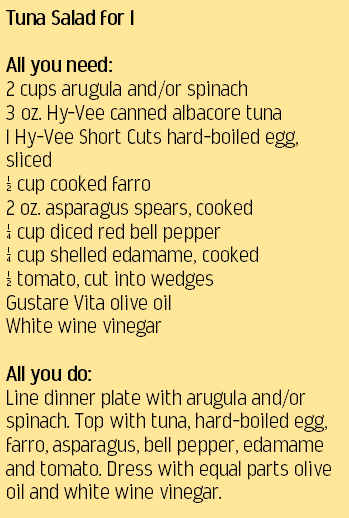|
|
2020 is the year of healthy vision. Celebrate and protect this vital sense with a diet of eye-friendly foods. You’ve probably heard that carrots are good for your eyes. In fact, carrots are just one of the many foods that maintain eye health and help them function.
A diet rich with colorful produce and good-for-you fats promotes healthy vision and may reduce risk of disorders, like glaucoma, cataracts and macular degeneration. Take a long hard look at these nutrients and foods that help improve eye health. Vitamin A: Assists retina function and maintains moisture to help prevent dry eye. Beta-carotene, a plant pigment that converts to vitamin A, benefits eyes adjusting to darkness. Foods: apricots, broccoli, carrots, cantaloupe, eggs, kale, mango pumpkin, red bell pepper, sweet potatoes, spinach, summer squash, tomatoes Vitamin E: Fends off harmful molecules to prevent healthy tissue from breaking down and reduces the chance of age-related macular degeneration, cataracts and glaucoma. Foods: almonds, asparagus, avocado, collard greens, mango, peanuts, peanut butter, pumpkin, red bell pepper, spinach, sunflower seeds . Vitamin C: Supports cell and blood vessel health in the eye. May help delay or reduce risk of cataracts, age-related macular degeneration and visual acuity loss. Foods: Brussels sprouts, broccoli, cantaloupe, cauliflower, grapefruit, green bell pepper, kiwi, oranges, strawberries. Riboflavin: Protects glutathione, an antioxidant linked to reduced risk of glaucoma. Prolonged riboflavin deficiency is associated with the development of cataracts.. Foods: almonds, beef, dairy, eggs, fortified breakfast cereal, oatmeal, quinoa, salmon Lutein + Zeaxanthin: Both are antioxidants that protect the macula, the part of the eye responsible for central, detailed vision. Both have been associated with reduced risk of age-related macular degeneration and cataracts. Foods: asparagus, broccoli, collards, corn, eggs, green peas, green beans, kale, orange bell pepper, spinach Zinc: Maintains retina health and shields eyes from the damaging effects of sunlight. Helps eyes produce protective pigments by transporting vitamin A from the liver to the retina. Foods: avocado, almonds, beef, cashews, chickpeas, crab, legumes, lobster, pork, oatmeal, oysters Omega-3s: A type of fat found in the retina. Critical for visual development and retinal function. Plays a role in tear development to help prevent dry eye. Foods: anchovy, chia seeds, halibut, flaxseeds, pumpkin seeds, sardines, salmon, swordfish, tuna, oysters, walnuts Thiamine: Also known as vitamin B1, thiamine aids the conversion of food to energy and may protect against nuclear cataracts, according to studies. Foods: acorn squash, beef, black beans, brown rice, English muffin, tuna, trout, pork chop, oatmeal The information is not intended as medical advice. Please consult a medical professional for individual advice. Megan Callahan is one of your Hy-Vee Corporate Dietitians. She is dedicated to helping people live healthier and happier lives. Megan received a bachelor’s degree in dietetics from Missouri State University. She completed her dietetic internship at the University of Kansas Medical Center, where she also received her Master of Science degree in dietetics and nutrition. Megan has been working with Hy-Vee full-time for 10 years. With a passion for nutrition and wellness, Megan is dedicated to educating customers and promoting healthy lifestyles to our Hy-Vee community. Megan lives in Lee’s Summit with her husband Matt, and their 2 children Kennedy (4) & Carsyn (2). Comments are closed.
|
Categories
All
Archives
July 2024
|
Grain Valley NewsGrain Valley News is a free community news source published weekly online. |
Contact Us |



 RSS Feed
RSS Feed
